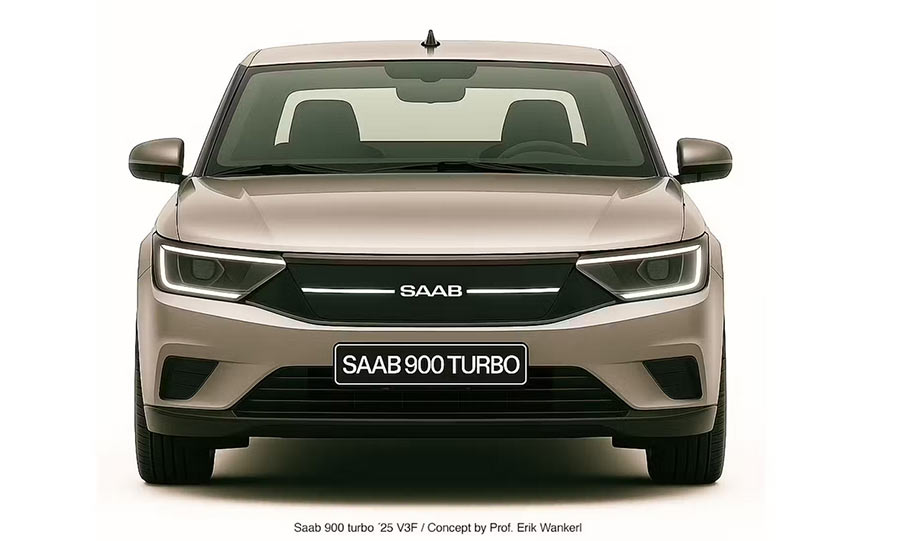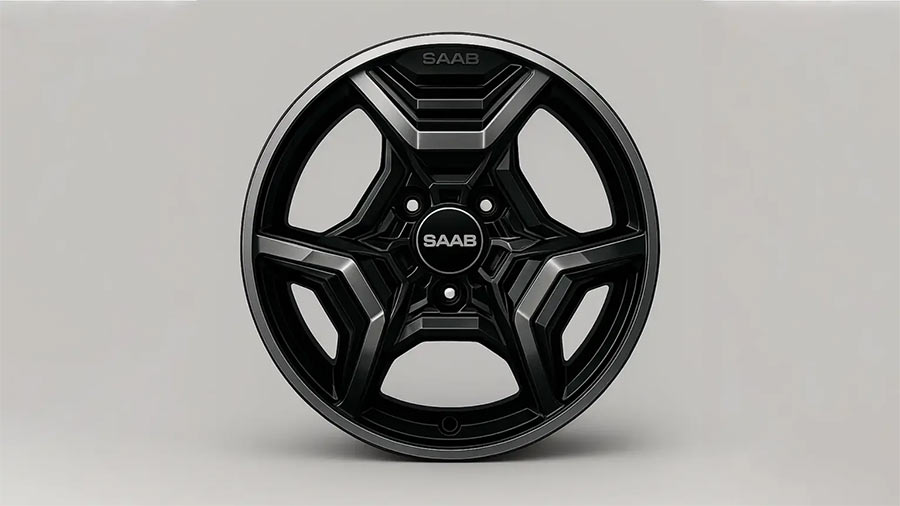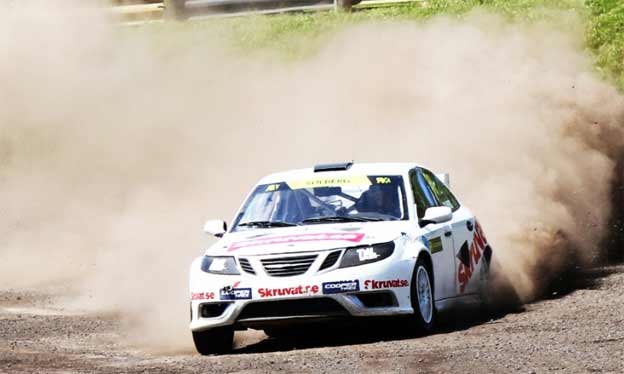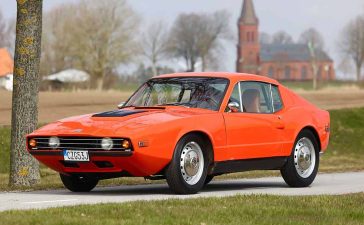Table of Contents
- 1 Saab never really died — and this is proof
- 2 Who is Erik Wankerl — and why does he care about Saab?
- 3 A Saab 900 Turbo for 2025 — created with code, not clay
- 4 Form follows function — the Saab way
- 5 Design inspiration: from Trollhättan to the AI frontier
- 6 Why the 900 Turbo still resonates in 2025
- 7 Can a digital design rekindle a brand?
- 8 Final thoughts: the revival we didn’t expect — but needed
Saab never really died — and this is proof
It’s been more than a decade since the last Saab rolled off the line in Trollhättan. While production may have ended, the brand never truly disappeared from the hearts of enthusiasts. It lived on in fan forums, garages, and in the minds of those who saw in Saab something different: a refusal to compromise, a devotion to function-driven form, and an unapologetically Swedish character. That same spirit now pulses through a new vision — not from a corporate boardroom, but from the hands of a design professor in Bremen.
Erik Wankerl, designer, artist, and self-declared “patchwork papa” with a passion for value-driven communication, has created something the automotive world didn’t know it needed: an AI-generated concept for a modern Saab 900 Turbo. It’s bold. It’s respectful. And, most importantly, it’s unmistakably Saab.
Who is Erik Wankerl — and why does he care about Saab?
Professor Erik Wankerl is no outsider trying to cash in on retro trends. He’s a lifelong Saab fan who grew up admiring the functional elegance and engineering quirkiness that made the brand a cult favorite among architects, art directors, and engineers.
Wankerl is more than just a designer — he’s a thinker. His work spans branding, communication, and organizational identity, with a focus on value creation through intuition and structure. That ethos aligns perfectly with Saab’s DNA: a brand that never chased the mainstream but built its own lane with turbocharging, safety-first cockpit design, and aerospace-influenced aesthetics.
In his own words: “If no one builds a new Saab 900 Turbo… I’ll do it myself.” And he did.

A Saab 900 Turbo for 2025 — created with code, not clay
What sets Wankerl’s 900 Turbo Concept apart is not just its homage to the past — it’s the process. This is no traditional sketch. Wankerl employed generative AI tools, including ChatGPT for conceptual dialogue and image-generation software for the design language, combining them with manual refinements in Photoshop.
The result?
A virtual concept car that’s more than just a digital sculpture. It’s a design manifesto: honoring Saab’s core elements while introducing a modern, all-electric drivetrain and a subtly sharpened profile.
Key design features include:
- A silhouette that remains instantly recognizable, complete with the classic steep windscreen and sloping hatch.
- An all-electric platform envisioned with an “electric turbo” — a nod to Saab’s pioneering forced induction legacy.
- Updated 3-spoke wheels as a tribute to the legendary Inca rims.
- Cockpit ergonomics that revive the center-console ignition key, a safety-first Saab hallmark.
Form follows function — the Saab way
Wankerl’s concept does more than recycle nostalgia. It re-engages with the functional philosophies that made Saab unique. Take, for example, the placement of the ignition between the seats — a safety feature to reduce knee injuries in a crash. This was no gimmick, and it’s present in the concept because it matters.

And then there’s the turbocharging legacy. Long before every carmaker slapped “Turbo” badges on econoboxes, Saab brought turbo performance to the masses in the late ’70s and ’80s. The 900 Turbo made a four-cylinder engine deliver the punch of a six-cylinder with far less weight — a form of intelligent downsizing decades before the term became marketing jargon.
Today, that same logic is reborn in the electric drivetrain. Smaller, smarter, cleaner — but still powerful.
Design inspiration: from Trollhättan to the AI frontier
The Saab 900 Turbo Concept 2025 isn’t trying to mimic old blueprints. Instead, it asks how those blueprints would evolve if Saab had never left the road. The project sits at the intersection of design history, brand philosophy, and cutting-edge digital tools.
Wankerl treated the AI not just as a generator, but as a collaborator. He trained it on the key visual language of the original Saab 900, refined its output in incremental prompts, and ultimately added his own vision to deliver a car that feels familiar and fresh at once.
His approach showcases how AI can serve creative professionals — not by replacing vision, but by accelerating ideation. It’s a new kind of sketchbook. One that’s interactive, fast, and capable of referencing thousands of Saab design details in seconds.
Why the 900 Turbo still resonates in 2025
There’s a reason Wankerl chose the 900 Turbo, and not the 9-3 or the 9-5, as the base for his project. For him — and for many Saab loyalists — the original 900 was the truest expression of the brand.
The GM-era Saabs never quite recaptured the angular elegance or driving feel of the originals. Wankerl himself found the first-generation 9-3 visually off-balance, lacking the distinct personality of the 900. This new design is his attempt to restore that identity and reclaim the Saab look from corporate dilution.
Retro-modern cars like the Renault 5 EV, Fiat 500e, and Mini Electric are thriving because they balance old charm with new tech. Wankerl’s concept shows that Saab could have been a serious player in that space — had it survived.
Can a digital design rekindle a brand?
Let’s be clear: this isn’t a production prototype. Saab AB, now focused entirely on defense technology, holds the rights to the name and has no known interest in automotive resurrection.
But Erik Wankerl’s work matters because it proves the brand still has cultural currency. His posts on LinkedIn drew massive positive feedback, sparking discussions about Saab’s unique place in automotive history and the potential role of AI in car design.
It also raises a larger question: If individual designers can generate convincing concept vehicles with consumer-ready aesthetics, what role will independent creators play in the future of mobility?
Final thoughts: the revival we didn’t expect — but needed
Erik Wankerl’s Saab 900 Turbo Concept 2025 is not a corporate strategy or a teaser campaign. It’s the result of one designer’s conviction that some things are too valuable to let go. Through modern tools and deep respect for history, he’s reignited interest in a brand that many assumed was frozen in time.
In doing so, Wankerl has demonstrated something Saab itself always championed: you don’t need to follow the mainstream to make something truly meaningful.












Saab if it intends to enter the world market again needs to also bring out a gasoline engine. Saab in starting again have to give a choice to the public. So far in America Electric is still a ways away from being a practical mode of transportation. I have owned nine Saabs, two currently, and hope that Saab AB would add to the success of the line allowing the Saab name back. After all, nothing says Sweeden more than the word SAAB !
Start production on that beautiful concept 900 and I will be the first in line to buy ! Only trouble is that there will be a million people trying to beat me. Guaranteed they will fly off the shelves. All the SAAB lovers will come back like the prodigal sons !
I believe that SAABS finest creations were the 99/900 the Turbo’s being the icing on the cake I have had both I still have the 900 turbo If SAAB could somehow build on these icons they might be able to revive the brand again The retro picture of the iconic 900 turbo above looks good and I think that is the way forward if there is any hope of revival of the brand
Saab needs to come back, particularly to explore interesting design choices. I used to dislike the iconic look of the Saab 900, but I think my Volvo has given me Stockholm Syndrome.